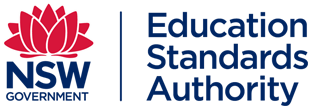Case study - Omar
This case study illustrates adjustments for a student with disability studying Technology Mandatory Stage 4.
Omar is in Year 7 and has an acquired brain injury, sustained at three years of age. Omar has always enjoyed using technology and particularly enjoyed the process of designing and building his own creations when he was in primary school.
Technology Mandatory - Stage 4
Omar’s Technology teacher is programming a unit for the Engineered Systems module which involves building a rubber band racer to demonstrate simple machines and the concepts of force, motion and energy.
Collaborative curriculum planning for Omar
Omar has muscle weakness in all limbs and is reported to have developed seizures at four years of age. He is regularly assessed by an occupational therapist and speech pathologist who contribute to his personalised plan. Omar’s diagnostic testing revealed that he has difficulties with receptive and expressive language and has difficulty with handling and manipulating objects.
Omar enjoys using technology to communicate, particularly using his tablet to take photos. However, his keyboard skills are developing, so he uses a switch-adapted mouse to assist him with typing skills. He has regular in-class support from specialist staff to assist him with the use of his assistive technology.
Omar is experiencing difficulty in the following areas in the classroom:
- sequencing ideas
- analysing information and linking concepts
- problem solving
- composing sustained written responses
- responding to nonverbal cues, eg tone of voice
- typing on a keyboard
- handling and manipulating objects
- maintaining engagement for sustained periods of time.
Omar responds well to assistance when he is learning a new skill and enjoys opportunities to be independent.
Adjustments for Omar
Through the collaborative planning process, Omar’s support team, including the special education teacher, Year advisor, occupational therapist, speech pathologist and parents, discuss Omar’s learning goals and priorities. They identify that Omar should work towards Stage 2 Mathematics and English outcomes and Stage 4 outcomes for all other subjects. He requires substantial adjustments in all his subjects.
Omar’s support team determine that Omar would benefit from the following adjustments:
- composing short simple sentences using assistive technology, eg speech to text software or keyboard
- note-taking scaffolds, preferably in a digital format
- annotating images to demonstrate understanding, eg the markup feature for photos on an iPad
- visual aids such as photographs, pictures or symbols to demonstrate key terminology and concepts
- checklists to support self-organisation
- peer support
- physical prompts to model skill development, eg hand over hand
- verbal contributions to class discussions
- regular rest breaks and extra time to undertake tasks
- ensuring his school equipment is easily accessible in his classrooms, eg arranging for his classes to be located close together and providing a locker or storage area nearby to hold his equipment.
Using the information and decisions from the collaborative planning process, Omar’s Technology teacher considers appropriate adjustments for Omar for the unit of work on Engineered Systems. The teacher describes ways that Omar can demonstrate evidence of his learning throughout the unit.
This resource has been provided by NSW Education Standards Authority (NESA) who work with the NSW community to drive improvements in student achievement. You can find further information, news and updates on the NESA website.
© 2021 NSW Education Standards Authority for and on behalf of the Crown in right of the State of New South Wales.
